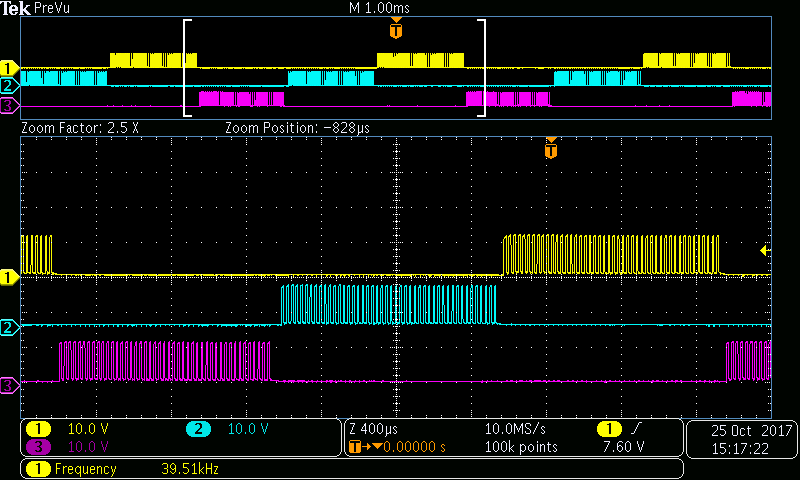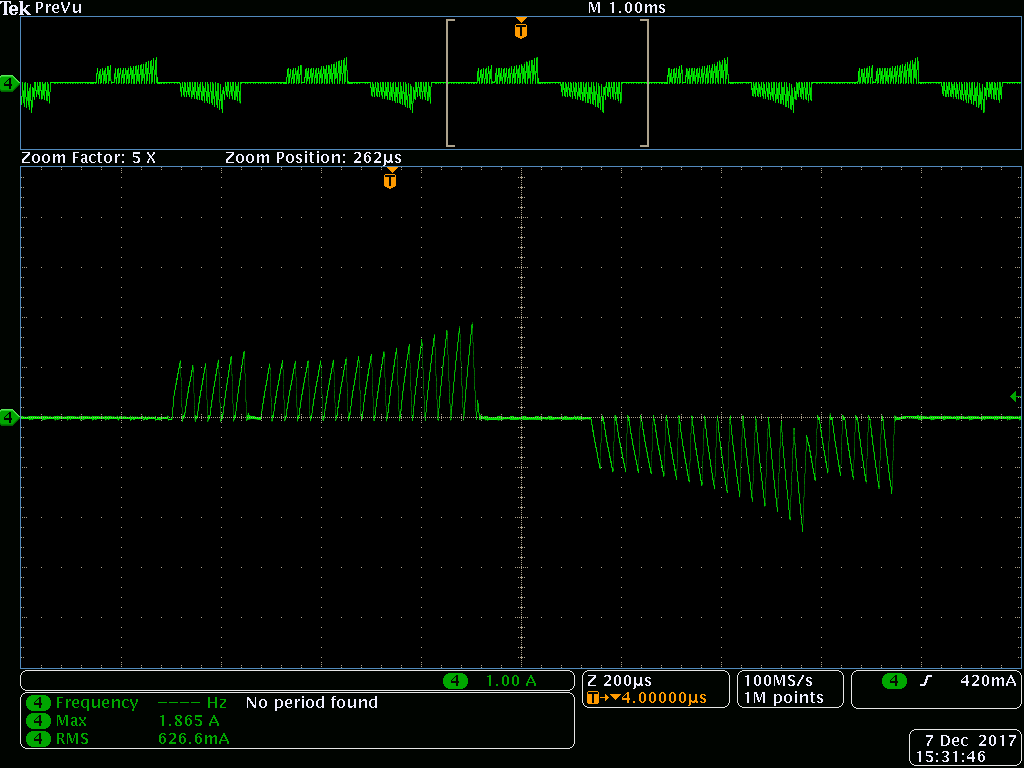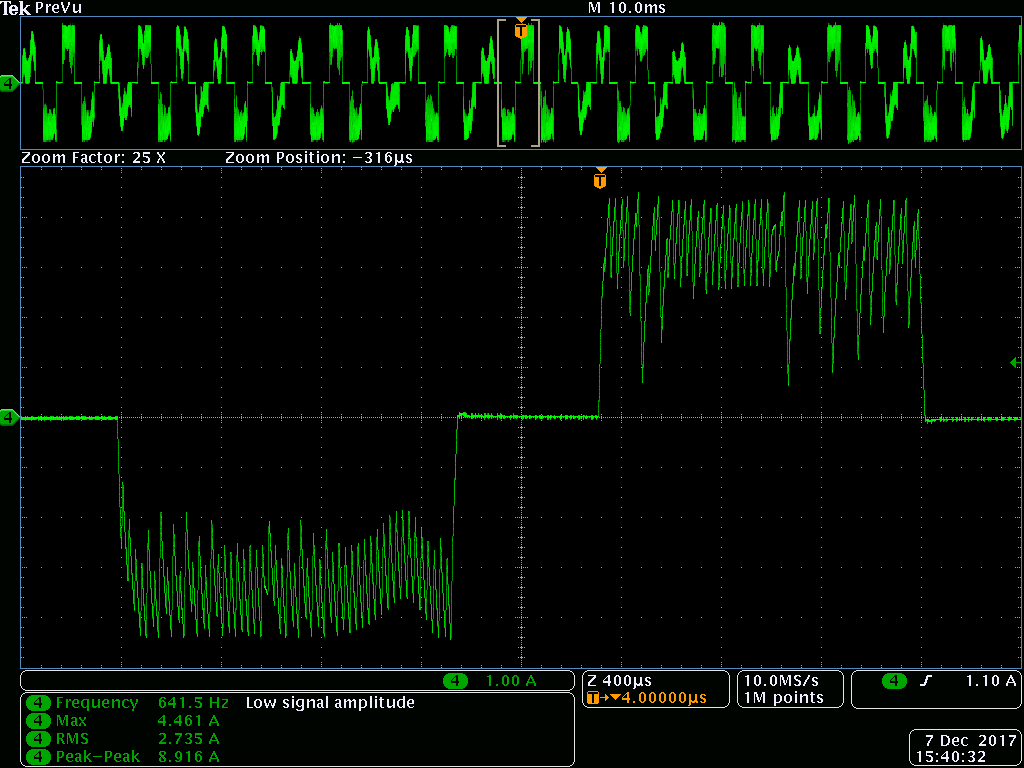I'm looking to implement a form of speed control using the TACH-OUT pin of the UC2625. With an RC filter on the tach output, we would have the average voltage (aka motor speed) and should be able to use this. My question is how/where to tie it back into the IC for a speed control loop? I'm a little confused on the E/A pins 1, 27 and 28 and PWM IN and RC-OSC pins 26, 25 that note they can be used for PWM feedback loops. I believe the datasheet shows a reference design on page 19 which incorrectly states it can be used for speed control.
I saw this question on a different thread but it was not answered. Does TI have any reference designs for closing the loop around the tach output for basic speed control?
Thanks!
[10/19/17-LE]






